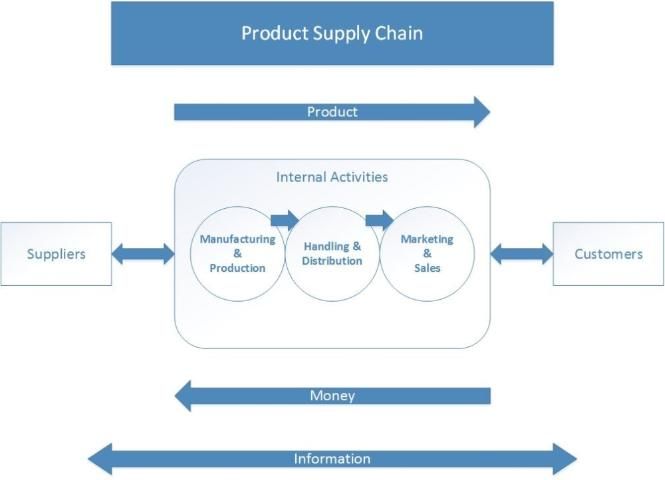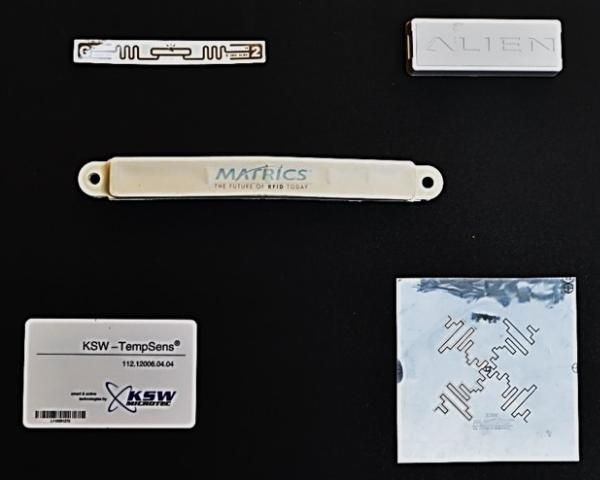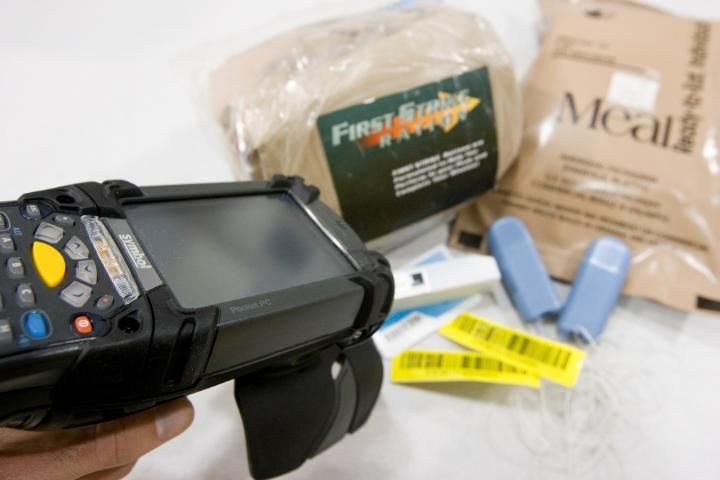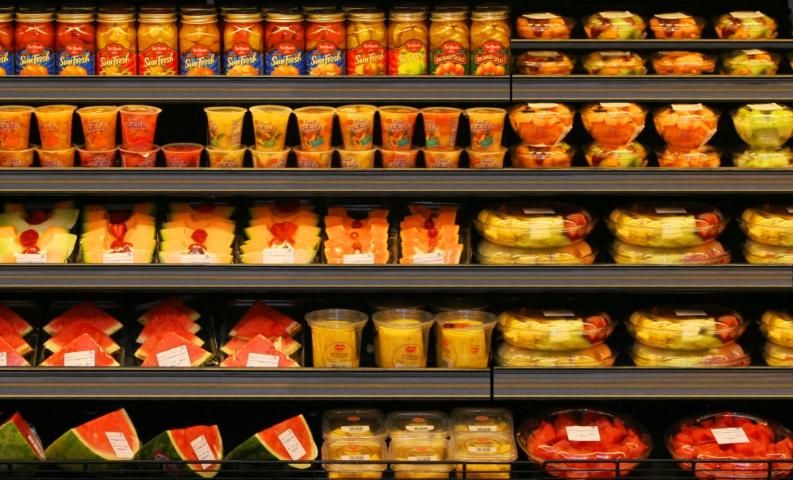Abstract
This paper explores the transformative role of technology in supply-chain management within the food industry, focusing on electronic devices, information technology, and green and sustainable technologies. We explore how electronic devices and information technology have revolutionized inventory tracking, quality monitoring, and supply chain coordination, resulting in enhanced efficiency and reduced waste. The paper also discusses emerging technologies like blockchain, artificial intelligence, and machine learning, highlighting their potential to revolutionize traceability, quality control, and personalized consumer experiences. Additionally, green, and sustainable technologies are explored, focusing on their role in transportation, packaging, and production practices. While acknowledging the benefits, the paper also discusses the limitations and challenges associated with these technologies, including cost considerations, interoperability issues, and environmental impacts.
Introduction
Supply-chain management—or the systematic, strategic coordination of business functions across a particular company or companies—has benefited from a wide variety of innovations. Subsequently, the food industry is drastically different today compared to even a few decades ago. Without a doubt, technology has had the effect of increasing profitability and efficiency for most parties in a supply chain. (The supply chain [Figure 1] is defined as a sequence or network of different companies or individuals that produce, manage, or distribute commodities or specific products.)

Credit: Jonathan A. Watson, UF/IFAS
Throughout history, innovation has led to advances in the food industry that have benefited producers, wholesalers, retailers, and consumers. In 1809, Nicolas Appert developed a process which allowed for the tinning and canning of food for troops in the French army. In 1905, the first patents for food irradiation were granted in the United States and the United Kingdom. In the 20th century, mechanical refrigerated trucks replaced iced boxcars, and interstate travel greatly reduced delivery times, transportation costs, and losses due to spoilage. As a result, a fresher product reached the shelves of retailers and ultimately consumers. It is in large part because of innovation that the global food system has improved its ability to deliver products with a higher degree of variety, quality, and consistency.
Innovation still plays a key role in the 21st century. Newer tools such as electronic devices and information technology, as well as green and sustainable technologies, are an integral part of supply-chain management within the food industry. Often, it is entire supply chains that compete with one another, as opposed to individual firms. Various technologies have the potential to provide a competitive advantage to those supply chains and, in extremely competitive markets, these technologies can determine which firms succeed and which firms fail.
The purpose of this paper is to identify supply-chain management technologies that are both critical and transformative within the food industry. From foundational advancements in tracking and tracing to the latest technologies like blockchain, artificial intelligence, and machine learning, the paper describes how electronic devices, information technology, and green technologies are revolutionizing efficiency and sustainability in the supply chain. Tailored for industry stakeholders—producers, distributors, and retailers—as well as researchers and extension faculty, this resource provides actionable insights for navigating the digital landscape. With this insight, firms in the food industry can make more informed decisions on which technologies should be incorporated into their own systems and to what degree. This publication is not intended to be a comprehensive guide to technologies in the food industry, but rather it should serve as a general introduction to the role and impact of a few recent, notable technologies.
Electronic Devices
The use of electronic devices such as radio-frequency identification (RFID), global position systems (GPS), and data recorders has drastically improved efficiency and reduced waste for food processors and distributors. For example, the use of RFID technology has enabled the food industry to track inventory and to ensure that products arrive at their intended destination. Tags (Figure 2) communicate with electromagnetic waves via a terminal that interprets the data associated with that product, such as temperature and expiration date. The data is used for tracking inventory, monitoring for foreign pathogens or bacteria, and identifying the product's contents. Wal-Mart uses RFID technology to track its pallets and cases for a range of goods such as fresh fruits and vegetables to household consumer products. This has reduced stock-outs and increased on-time deliveries. RFID tags have potential for "smart packaging," automatic checkout, "smart appliances," "smart recycling," and marketing/promotional opportunities. It is also believed that this type of technology could improve security, productivity, inventory control, and traceability as well as result in capital and other operational savings (Chandler 2003).

Credit: Lauren Douma, UF
Advances in RFID technology have also included monitoring the temperatures of various products. This has proved to be extremely valuable for perishable products, particularly in the food industry. For example, a perishable food product moving through the distribution channel can be monitored for quality. If temperatures exceed a threshold, a decision can be made regarding the product's quality and the product can be returned to the producer or rerouted to a closer distribution center or store to minimize financial losses and maximize consumer satisfaction.
Recently, RFID tags have been equipped with sensors and data recorders to monitor product as it moves through the supply chain. Data recorders (Figure 3), also known as data loggers, are electronic devices that record data over time or in relation to location with an internal or external sensor. In general, they are small, portable, battery powered, and equipped with a microprocessor and memory for data storage. The range of applications varies from general purpose types (which can be programmable) to specific (where few parameters are changeable). In the food industry, data recorders are extremely useful for monitoring fresh fruits and vegetables in transit. The data recorder can be affixed to the inside of a shipping container and scanned without opening the container until it reaches its destination. Key variables such as temperature, humidity, and change in elevation are extremely important when monitoring perishable product. Data can be downloaded from the data recorder and analyzed later, while newer data recorders use wireless technology to allow communication via smartphone or computer.

Credit: Lauren Douma, UF
There are other electronic technologies that companies in the food industry use specifically to track and manage product. For example, GPS has enabled the food industry to have a greater degree of control and flexibility in handling products that they manufacture or purchase. Firms in the food industry can monitor and track expected shipments of product within their distribution channel starting with their input suppliers and ending with their customers. This eliminates uncertainty or lack of knowledge for delayed or lost shipments since the product location is easily identifiable. GPS can track products with pinpoint precision and provide real-time, in-transit data about the product's condition and location. With this information, firms can more easily adjust to or even avoid a scenario where a necessary input does not arrive as promised or planned. To make the movement of products flow more smoothly, the delivery of these products must be choreographed and planned out accordingly. Delivery vehicles are given a "window" (usually about 30 minutes) during which raw materials can be delivered and finished products dispatched to ensure smooth operations and to avoid congestion (Burch 2005).
Information Technology
In the food industry, information technology plays a critical role in reducing costs and meeting customer demand. Information technology coordination is the method of organizing, planning, and strategizing when synchronizing the needs of two or more distinct groups. The specific role of information technology depends on the type of product that is being sold. Salin (1998) states that choosing the appropriate type of information technology coordination depends on whether your product is "functional" or "innovative," and that choosing the correct coordination can ultimately lead to a supply chain with a competitive advantage.
In agriculture, "functional" products are defined as those that are homogenous in nature; often they are commodities such as sugar or flour. A cost-reducing, supply-chain style is the most appropriate in this scenario, because consumer demand for these products is relatively predictable. Transportation, production, and inventory management are areas where information technology can reduce costs within the supply chain, particularly for functional products. Some examples of information technologies suitable for functional products include automated ordering processes, quality-assurance control systems, and delivery scheduling. All these technologies can reduce costs for players within the supply chain and can increase efficiency.
New, differentiated products require different methods of coordination using information technology, because it is often difficult to predict consumer demand for innovative products. Because of this, firms in the food industry should adopt an approach that monitors the sales and purchasing habits of consumers and uses this information to forecast demand. This may not be the most effective technique to reduce costs, but it is the most appropriate model to deliver the attributes that consumers most desire. Examples of information technology coordination for innovative products would be the use of scanner data collection at point-of-sale terminals. Additionally, portable scanners (Figure 4) in conjunction with software are also used to monitor and track product in an inventory control system. Most traditional food retailers—such as Kroger, Safeway, Publix, and Winn-Dixie—use this type of information technology to manage inventory levels for these innovative products and re-order products when necessary. Customer loyalty cards are another example, because they can help retailers gather information to predict consumer behavior. Retailers such as Kroger and Wegman's use loyalty or shopper cards as an incentive to attract consumers with the benefit of collecting demographic, socioeconomic, and consumer spending information. Ultimately, the approach for innovative products must be responsive and flexible because innovative products in the food industry can have noticeably short product life cycles.
As a recent development, blockchain technology is fundamentally altering supply chain management in the food industry, offering transparency, traceability, and efficiency. Platforms like IBM Food Trust exemplify this transformation, providing a decentralized ledger for participants to access and record the entire lifecycle of food products. Smart contracts automate agreements, streamlining processes such as payments to farmers upon successful deliveries. The impact is profound, as blockchain's real-time traceability aids in rapid response to issues like foodborne illnesses, preventing further contamination and facilitating targeted recalls (Tanwar et al. 2022). This heightened transparency not only mitigates the risk of fraud and ensures supply chain integrity but also empowers consumers with detailed information about the origin, production methods, and transportation of their food, fostering trust and informed decision-making (Singh and Sharma 2023). The technology's ongoing evolution promises continued enhancements in the safety, efficiency, and reliability of the global food supply chain.
Artificial intelligence (AI) and machine learning are playing an increasingly pivotal role in the food industry, revolutionizing various aspects of production, distribution, and consumption. In food production, AI-driven technologies optimize processes by predicting crop yields, monitoring soil health, and automating harvesting techniques (Shaikh, Rasool, & Lone 2022). In supply chain management, AI enhances coordination, reducing inefficiencies, and minimizing waste through predictive analytics and intelligent routing (Kumar, Mohd, and Husain 2021). Additionally, AI and machine learning are employed in quality control measures, utilizing machine learning algorithms to identify defects or contaminants in food products, ensuring adherence to safety standards. On the consumer end, AI and machine learning are reshaping personalized experiences through recommendation systems and predictive analytics, tailoring suggestions based on individual preferences and dietary needs. With AI's continuous advancements, the food industry is witnessing improved efficiency, sustainability, and overall innovation across its diverse value chain.

Credit: Tyler Jones, UF/IFAS
Green and Sustainable Technologies
"Green" and "sustainable" have been buzz words in business for many years now, and the food industry is no exception. Part of this movement has been driven by a push for corporate social responsibility in response to business operations' negative impacts on the environment. However, in many cases, firms are primarily interested in increasing profitability. Adopting green and sustainable technologies that are energy efficient is one method food companies are investing in. Fellows (2009) states that improvements in energy efficiency make food companies more competitive. Therefore, firms have incentives to adopt green and sustainable technologies that generate additional sales, reduce costs, and thereby increase profits for shareholders.
Transportation is one component of the supply chain that can greatly benefit from advances in green technology, particularly for vehicle maintenance and certain fuels (although that depends on the application and the present market conditions for fuel). Ethanol (E-85) used in flexible fuel vehicles is often much cheaper than gasoline on a per gallon basis; however, ethanol results in fewer miles per gallon. This is because the gasoline gallon equivalent (GGE) or the amount of alternative fuel it takes to equal the energy content of one liquid gallon of gasoline, is greater in ethanol. One gallon of E-85 has about 71.94% of the energy of one gallon as gasoline (Gable and Gable 2009). However, proponents of E-85 claim this is simply because automotive manufacturers currently fail to take advantage of characteristics that are superior in ethanol-based fuel blends. Some studies even suggest that certain ethanol engines can produce 22% more miles per gallon than identical gasoline engines (Brusstar, Stuhldreher, Swain, and Pidgeon 2002). Biodiesel, while more expensive than petroleum diesel, can be used in a standard diesel engine without the need for special modifications. While fuel costs for biodiesel exceed costs for petroleum diesel, short-term engine wear has been found to be less than petroleum diesel.
Despite the benefits, the production of certain biofuels may increase food prices. Farmland that was once dedicated to producing food for human consumption or fodder for livestock is now diverted to the production of biofuel. Nevertheless, the lure of reducing transportation costs increases the competitive nature of profit-seeking firms and, ultimately, could benefit the consumer. The use of fossil fuel alternatives such as ethanol and biodiesel are still controversial, but there is no denying that these alternatives are drawing increasing amounts of attention from firms seeking sustainable, cost-reducing practices.
Packaging (Figure 5) is another example of a technology in the food industry that has a significant effect on the supply chain and the environment. Recently, the food industry has focused its attention on reducing the amount of total packaging materials while improving the quality and shelf life of the products. These innovations will continue as important trends while retailers will be continually challenged to reduce the amount of packaging waste. British retailers Sainsbury and Tesco have had remarkable success in reducing the amount of packaging they use, which decreases their costs and contributes to their bottom line.

Credit: UF/IFAS
Other green technologies include the use of natural fertilizers and pesticides in the production of organic foods, although there are limitations to the practicality and marketability of such products. In many cases organic food production is more expensive when compared to conventionally produced food. This is partly due to the increased cost labor, post-harvest handling, yield losses, technological limitations, and the demand associated with organic food production. With this in mind, "organic food production is not on its own enough to grant the whole food chain sustainability" (Mariani 2007). As a result, attempting to feed the world with organic foods or the technologies associated with their production would not be realistic. However, they are important parts of the food system and present strong marketing opportunities.
Limitations
These technologies are not without their limitations. Technologies may have high capital costs and, depending on the size of the firm, these investments may not be feasible. For example, RFID technology has limits to its performance. According to Curto and Gaspar (2021), lack of hardware compatibility and interoperability have been major limiting factors for RFID implementation. Certain products such as liquids can interfere with the transmission of the electromagnetic waves to the terminals and result in a "bad read" of the data. Also, GPS can have problems with the transmission and reception of the satellite signal. If the signal is disturbed, then the location of the product in transit will be unknown. The accuracy of that signal may also be in question. GPS may only be able to track a product's location to within a certain range despite recent innovations in GPS technology that have made this less of an issue.
Information technology has limitations as well. Older individuals may have a challenging time adjusting to newer standards and applications, whereas younger persons may find the use of these technologies much easier. Information technology also requires the expertise of individuals who are trained to understand the complexities of the system to maintain and troubleshoot it. This takes time, energy, and money. Firms need to calculate and determine if the benefits outweigh the costs of administering such a system. Depending on the type of system, privacy may be an issue. With the rise of the Internet and the information age, threats of stolen information are a real risk.
There are also disadvantages associated with green technologies, and given their current state, they may not be practical for all firms. While green technologies may have a positive environmental impact, the financial cost of implementing the technologies may outweigh the benefits. Also, depending on the location, green technologies may not be practical or well suited for a particular environment. For example, you would not want to use wind turbine energy in a location such as the southeastern United States, which frequently experiences hurricanes and tropical storms. Availability is another disadvantage, especially with biofuels. In the United States, our infrastructure is still heavily dependent on fossil fuel derivatives, so using alternatives such as ethanol and biodiesel is not a practical solution to meet every need in the food industry.
Concluding Remarks
As stated before, technology has the potential to increase profitability and efficiency by strengthening supply chains. Increasingly, there is more competition between supply chains than between individual firms, and technology has unquestionably played an integral role. Firms in the food industry must weigh the benefits and the costs before deciding if a certain technology is appropriate for their given business model. Electronic devices, information technology, and green and sustainable technology are just some options that managers and stakeholders can incorporate into their supply chain, but those options are not without limitations. Managers and stakeholders can use the information contained in this document to make informed decisions about how they can improve their operations, but, ultimately, the choice is contingent on the firm's type of industry, their product, and availability of resources.
References
Agarwal, A. K. 2007. Biofuels (alcohols and biodiesel) applications as fuels for internal combustion engines. Progress in Energy and Combustion Science 33(3), 233–271. https://doi.org/10.1016/j.pecs.2006.08.003
Brusstar, M., M. Stuhldreher, D. Swain, and W. Pidgeon. 2002. High Efficiency and Low Emissions from a Port-Injected Engine with Neat Alcohol Fuels. No. 2002-01-2743. SAE Technical Paper.
Burch, D., and G. Lawrence. 2005. "Supermarket own brands, supply chains and the transformation of the agri-food system." International Journal of Sociology of Agriculture and Food 13(1), 1–18. https://doi.org/10.48416/ijsaf.v13i1.312
Chandler, S. 2003. "Vision of the future for smart packaging for brand owners." Paper presented at the Proceedings of the International Conference on Smart and Intelligent Packaging, Barcelona, Spain, October 28–29.
Curto, J. P., & Gaspar, P. D. 2021. Traceability in food supply chains: Review and SME focused analysis-Part 1. AIMS Agriculture and Food, 6(2), 679–707. https://doi.org/10.3934/agrfood.2021041
Fellows, P. J. 2009. Food processing technology: Principles and practice. Cambridge: Elsevier.
Gable, C., and S. Gable. 2009. "Fuel energy comparisons: Gasoline gallon equivalents (GGE)." About.Com Hybrid Cars & Alt Fuels.
Kumar, I., Rawat, J., Mohd, N., & Husain, S. 2021. Opportunities of artificial intelligence and machine learning in the food industry. Journal of Food Quality, 2021, 1–10. https://doi.org/10.1155/2021/4535567
Mariani, M. 2007. "Sustainable agri-food supply chains and systems." Paper presented at the Forum of China-Europe.
Salin, V. 1998. "Information technology in agri-food supply chains." The International Food and Agribusiness Management Review 1(3): 329–334.
Shaikh, T. A., Rasool, T., & Lone, F.R. 2022. Towards leveraging the role of machine learning and artificial intelligence in precision agriculture and smart farming. Computers and Electronics in Agriculture, 198, 107119. https://doi.org/10.1016/j.compag.2022.107119
Singh, V., Sharma, S.K. 2023. Application of blockchain technology in shaping the future of food industry based on transparency and consumer trust. Journal of Food Science and Technology, 60, 1237–1254. https://doi.org/10.1007/s13197-022-05360-0
Tanwar, S., Parmar, A., Kumari, A., Jadav, N. K., Hong, W.-C., & Sharma, R. 2022. Blockchain adoption to secure the food industry: Opportunities and challenges. Sustainability, 14(12), 7036. https://doi.org/10.3390/su14127036\